Complete Photographic Coverage of the Leica Store Kyoto
I used a pair of very different Leica cameras to create two distinct looks.
I’m just past the halfway point in my one-month trip to Japan. I’m on the Shinkansen again, speeding west from Yokohama to Kyoto. With my compact iPad, keyboard, and internet connection via cell signal, the system is remarkably functional as a blogging platform.
Following up on the previous Leica Store Kyoto post, I offer the complete photographic coverage of the store. I was a bit tongue-in-cheek in my previous post about photographing the Leica Store with a Hasselblad. This time, I used a pair of very different Leicas to showcase the beautiful showroom and gallery.
I’ve been to the store in the past and blogged about it in 2017. I shot Olympus Micro 4/3 cameras back then. My camera setup was more straightforward and lighter eight years ago.
I included pictures from two cameras to highlight the differences in how I’ve been using them during this trip to Japan. The 100MP Hasselblad X2D is there for the ultimate in image quality. The Leica D-Lux 8 is my compact camera for snapshots and documentation. All the color photos in this post were taken with the D-Lux. The Leica M Monochrom Typ 246 is my “artistic” and moody camera. Beyond the color vs. black and white difference, the 50mm focal length with a shallow depth of field offered a very different look.
We begin with a picture of the storefront, situated in a converted traditional Japanese building within the historic Gion neighborhood of Kyoto. The Leica Store Kyoto is subtle and blends so seamlessly that most would not know this is a camera store.
This perspective of the product display cabinet is nearly identical to the photograph with the Hasselblad. Do you notice a difference? You won’t see the change in resolution in these small images. However, the Leica D-Lux 8 version is a bit more washed out with less vivid colors. Additionally, the highlights are overexposed—the dynamic range doesn’t compare to that of the X2D.
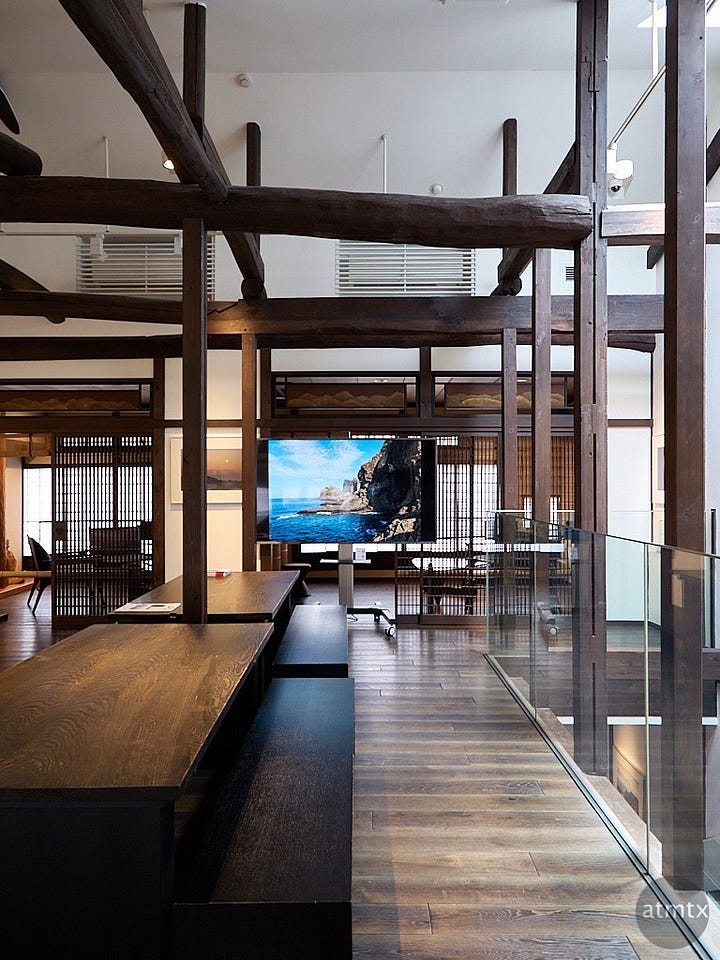
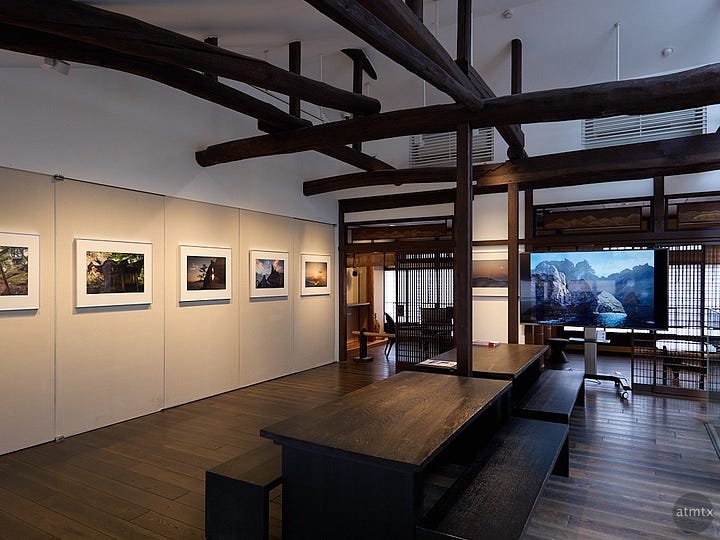
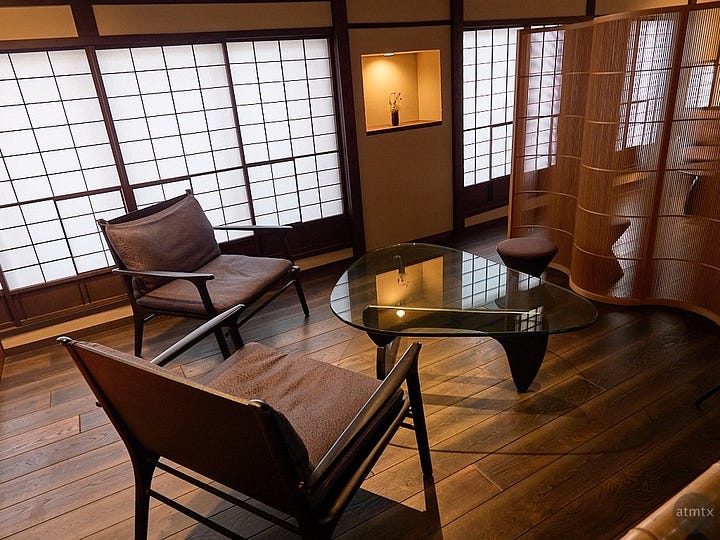
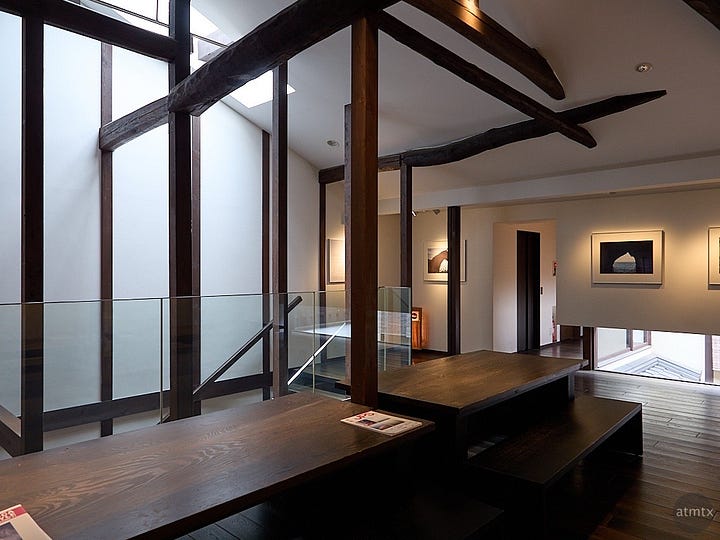
We begin our tour in the second-floor gallery space. I appreciate how Leica preserves the original roof structure, which lends character to the gallery. There is also a cozy sitting area near the front, but it was roped off.
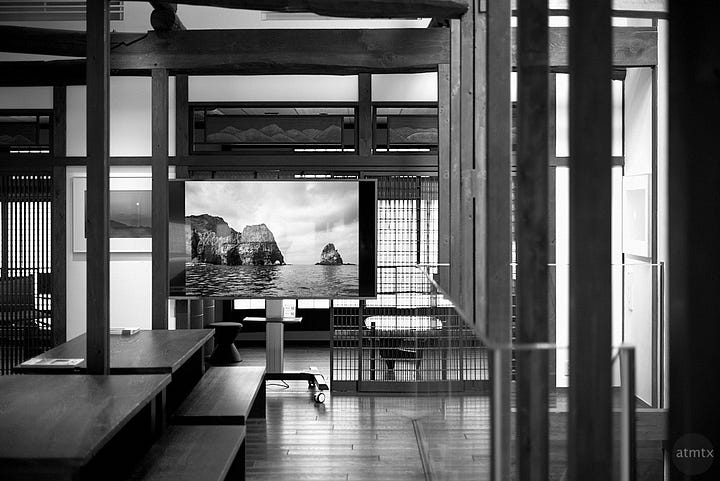
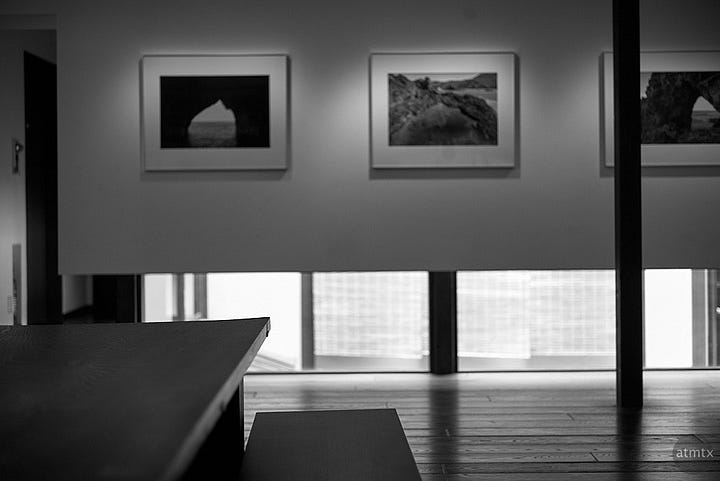
Are these black and whites of the gallery space more “artistic”? Perhaps. But they definitely look different from the D-Lux 8 snapshots. The manual focus Leica M Monochrom requires more effort, not just in focusing but also with exposure. The black-and-white-only sensor is more prone to unrecoverable blown-out highlights. Thus, you need to make sure you don’t overexpose.
The picture on the right is in focus. I chose to focus on the corner of the table, softening the gallery images.
Walking down to the first floor, I snapped my favorite picture, capturing the light and shadow pattern through the front door.
I was surprised by the traditional tatami mat room at the back of the store until I saw the strobe setup. Is this room used for making Japanese-style portraits?
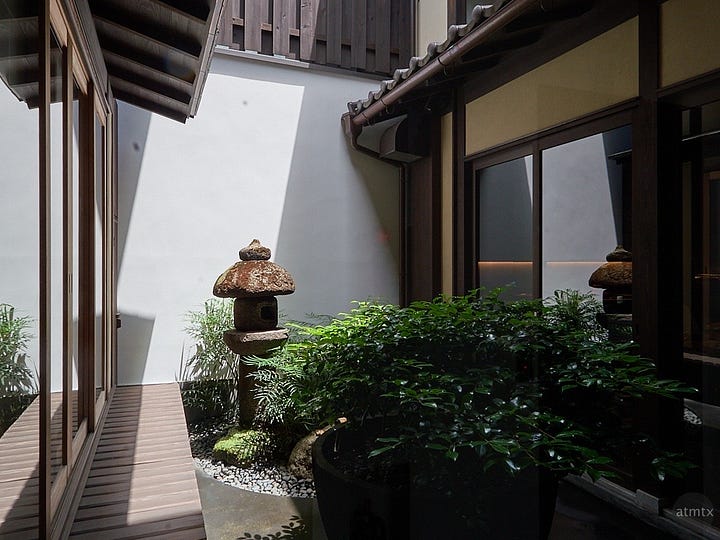
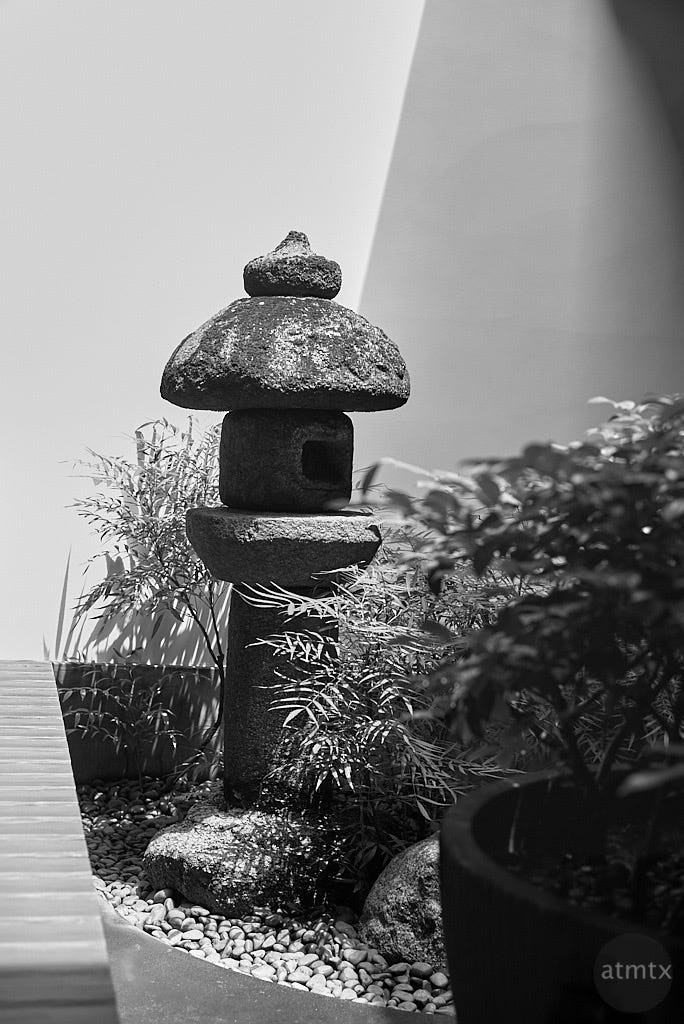
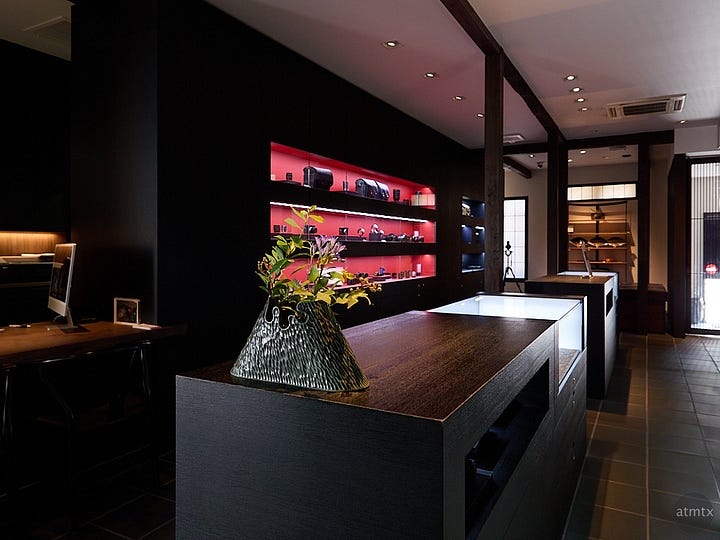

I mentioned how I shot the two cameras differently, creating a contrast in moods. I didn’t shoot the pair of images from the exact same location; instead, I interpreted the scenes in a way that best suited the camera I used.
The Leica D-Lux 8 documents the scene, and the M Monochrom simplifies and picks out details; part of this is due to the 50mm vs. the 24mm equivalent focal length but also the depth of field differences. Black and whites also abstract the image and work well to elevate targeted objects.
I targeted the foreground brochure display, which throws the background out of focus, creating a moody perspective of the Leica store.
I’ll conclude with a close-up of the Leica cameras on display. They are most likely some variation of a M11. I took this with the D-Lux 8, which has a 24mm to 75mm equivalent focal length via its built-in zoom. Ironically, I shot this at a 49mm equivalent, essentially matching the perspective of my M Monochrom.
While using the D-Lux at about 50mm focal length makes it appear closer to the M Monochrom, the depth of field and tonality are not the same, even after a monochrome conversion in post-processing. The two cameras are, in fact, very different in their physical tactility and the images they produce. As I walked around Japan, I enjoyed using both cameras for specific scenes.


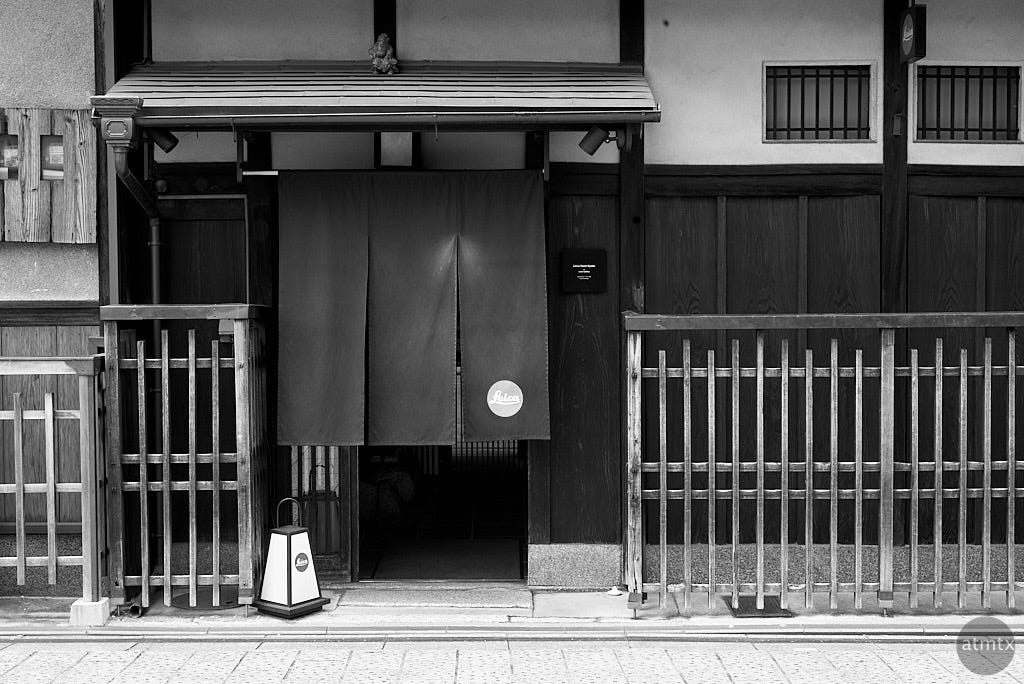
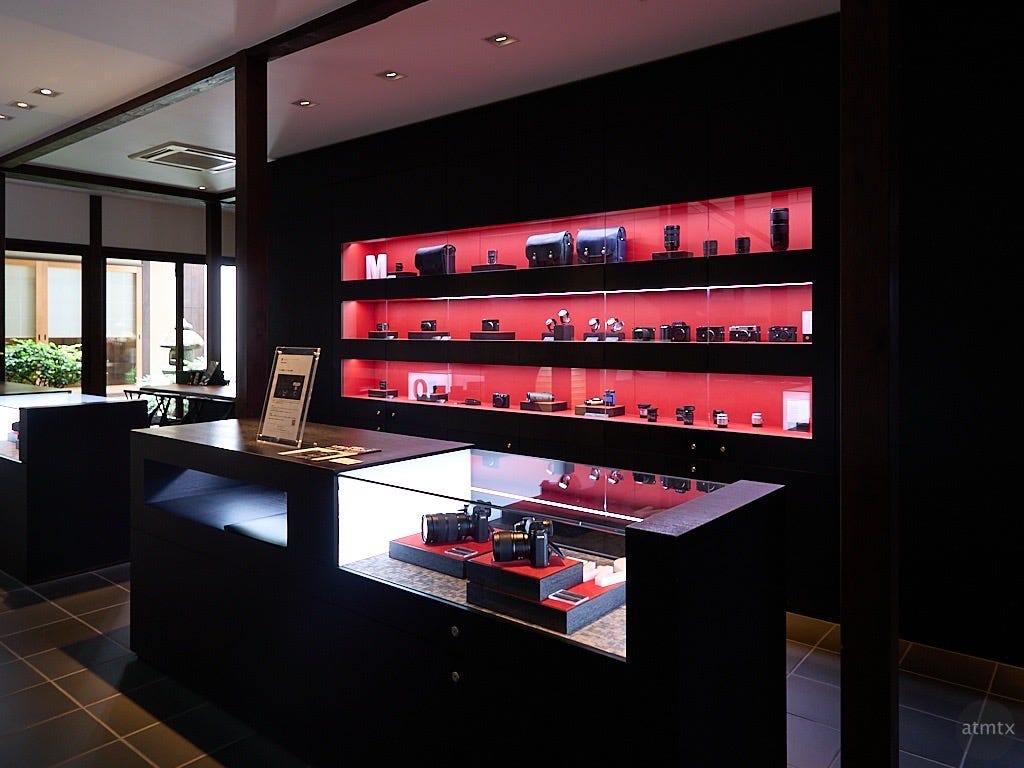
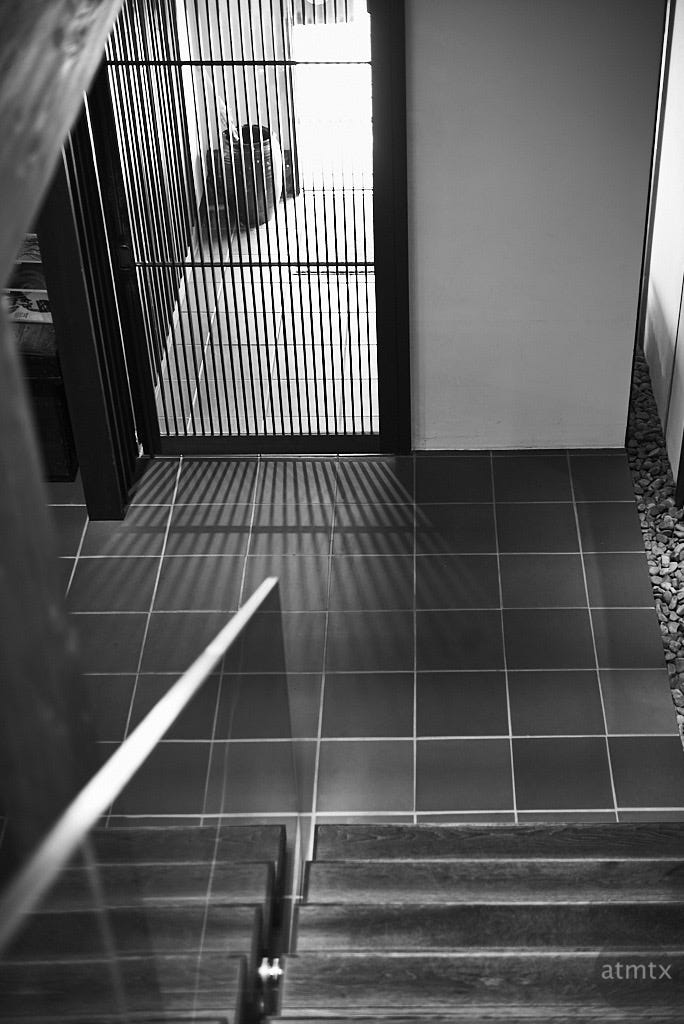
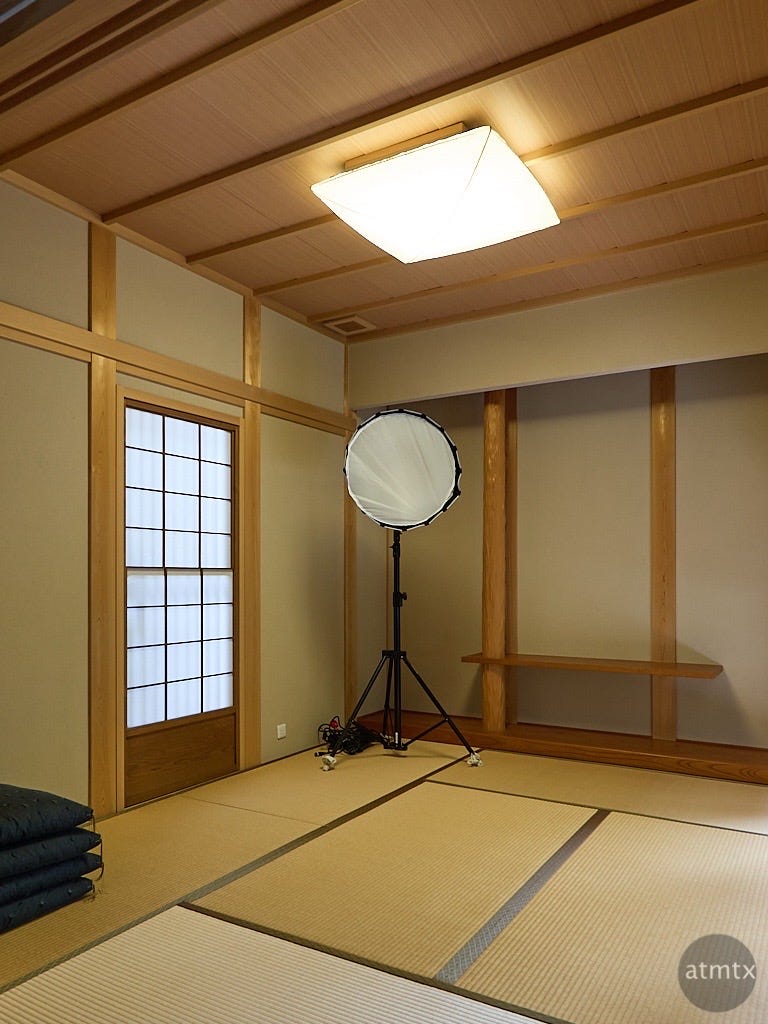
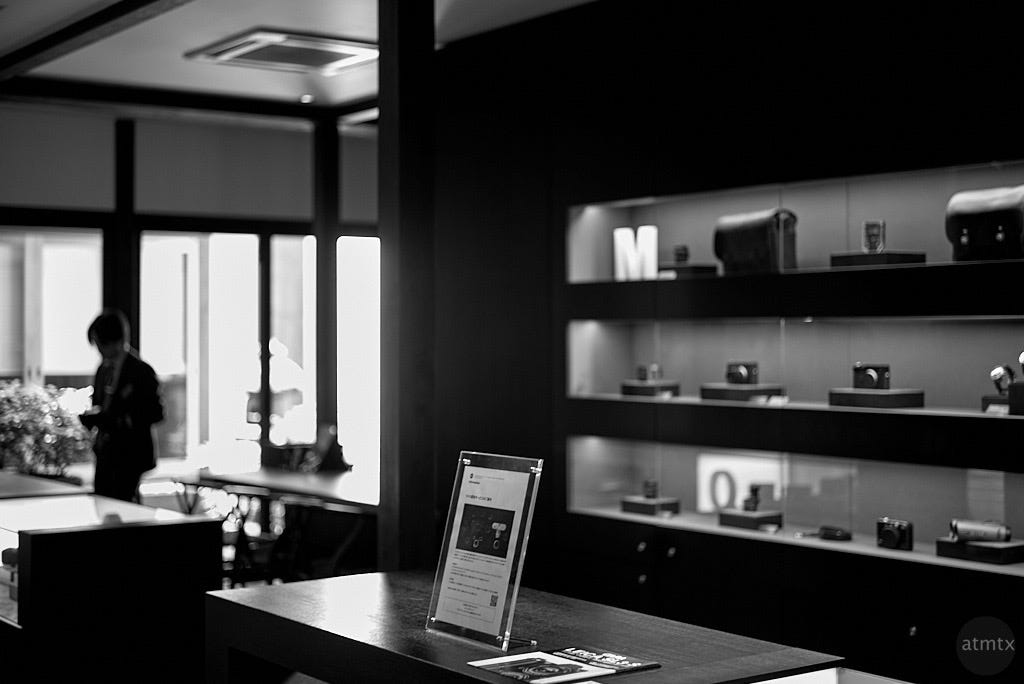
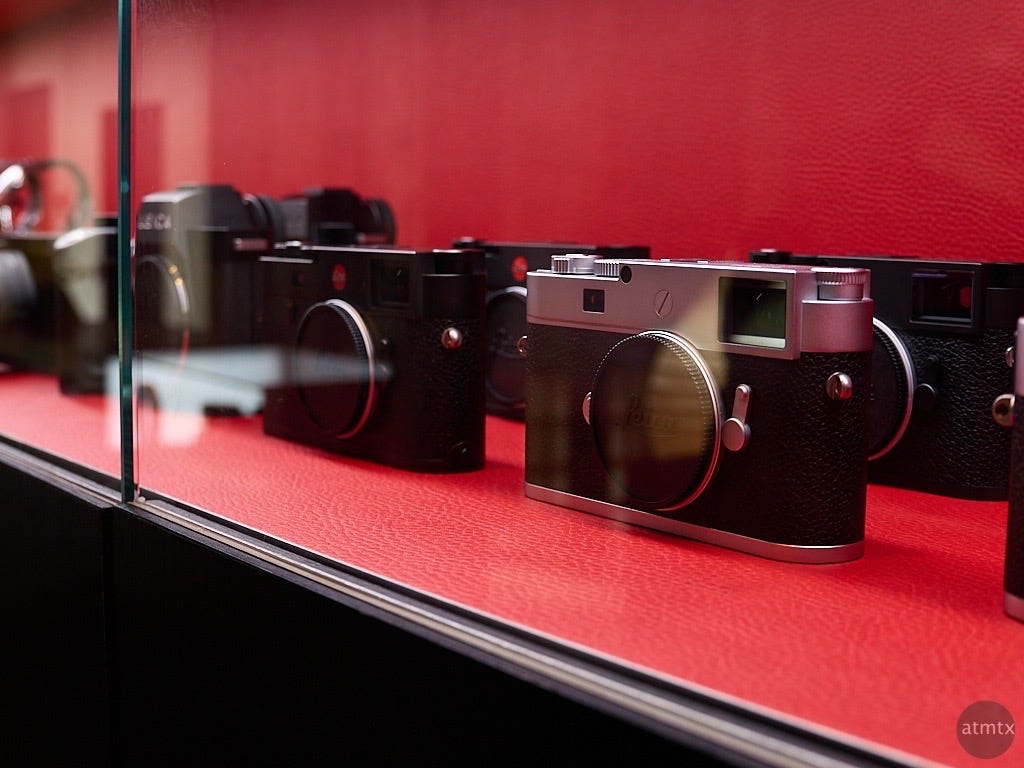
Gorgeous